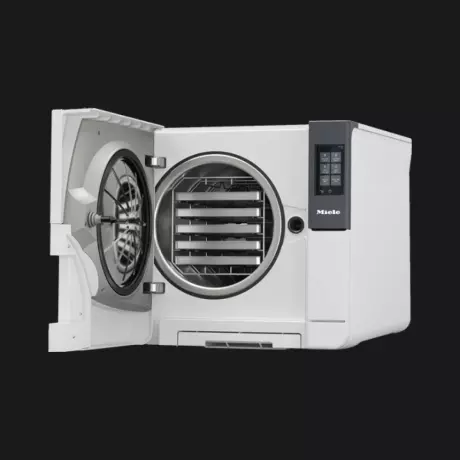
Laboratory technology - laboratory washers...
LabTech Labortechnik GmbH offers you a large selection of laboratory technology - laboratory washers...
Portal and digital medical technology fair of the largest MedTech cluster in Germany

Laboratory technology - laboratory washers...
LabTech Labortechnik GmbH offers you a large selection of laboratory technology - laboratory washers...

Sterilizers - choice and quality
LabTech Labortechnik GmbH offers you a large selection of laboratory technology - sterilizers Exampl...

There are several methods for sterilizing medical equipment and supplies. High level disinfectants use high-concentration chemicals that can kill a wide range of bacteria and microbes on surfaces and in solutions. Some of these materials are even biodegradable and non-toxic. These products are also often used in hospitals and research labs. They kill most vegetative bacteria, fungi, and viruses, but not prions, which are resistant to traditional sterilization methods.
The simplest method of sterilizing objects is to use ethanol. EtO is often used in laboratories and is effective at killing bacteria, spores, and viruses. In a laboratory setting, ethanol can be effective, but isopropanol is better for sterilizing fats and other materials. It's important to remember that ethanol is a carcinogen and should only be used with great caution.
Radiation sterilization involves exposing packed materials to high temperatures. Different types of radiation have different effectiveness and penetration. UV rays are relatively harmless and are often used for small areas. X-rays and gamma rays are more effective, but are more dangerous. These types of sterilizers are typically used in large-scale laboratories and for pallet loads of medical devices. They must be handled carefully.
Ozone and carbon dioxide gas are two common options. Carbon dioxide can minimize the risks of explosions and ethylene oxide kills most organic matter. Other gases that are useful in the laboratory are hydrogen peroxide, peracetic acid, and formaldehyde solutions. These materials can also be used to sterilize dental instruments. In addition to the above-mentioned gases, other methods are available. The IPA and ethanol are especially good at killing spores.
Several types of sterilization methods are available. Chemicals are used to kill microbial cells. They can destroy bacteria, fungi, and other contaminants. These methods are not safe for humans, and may damage medical instruments. In addition to chemicals, other methods are used. Ultraviolet light is another type of radiation. It kills microbial cells by denatured protein and is also considered a safe method. It is not suitable for large areas, but it can be used for very small ones.
Autoclaves are generally used for sterilizing medical instruments. Class S autoclaves are a type of steam sterilizer. They can process objects from 100 to 137 degrees Celsius. There are many types of class S and N autoclaves, each of which has its own advantages. While a class S autoclave has its advantages, a class N autoclave is more versatile and has more options.
Steam sterilizers are used to kill microbial cells, but are less effective than other methods. In a laboratory, hydrogen peroxide is used to kill spores, but not microbial cells. Therefore, hydrogen peroxide sterilizers are most commonly used in manufacturing and hospitals. They are safe for small areas, but they are not suitable for large areas. These units should be compact tabletop autoclaves.
Steam sterilizers can be used to sterilize various items. The Getinge LSS 590 Steam Sterilizer is a high-performance autoclave. It uses high-pressure steam to destroy microbes and spores, and it can perform up to 19 preprogrammed cycles. Moreover, it has an intuitive soft-key user interface and monitors all phases of the cycle, making it ideal for busy laboratories.
There are many methods of sterilization. Some of the most popular techniques are steam sterilization and autoclaves. Both methods of sterilization are highly effective for microbiology laboratories. The autoclave, for example, uses pressurized steam to destroy microbes. However, autoclaves should be used in a laboratory with high-temperature equipment, which is the most common method in the microbiology industry.
In contrast, steam sterilizers can be used for both home and industrial settings. The most common uses for steam sterilizers are in the research, development, and pharmaceutical industries. While the former is more expensive than autoclaves, it does have a long-term effect on bacteria and viruses. It also kills pseudo-living organisms in the laboratory, which can pose a serious risk to both the laboratory and the patient.
Steam sterilization uses an intense amount of pressure to kill all types of microbes. The resulting gas is hotter than the air, but steam is still more effective at killing microbes than other liquids. The temperature of steam is 121-134 degC. This high temperature kills all microbes by hydrolysis and coagulation. Likewise, the pressure and intense heat produced by the steam can cause a variety of other complications.
Become a digital exhibitor yourself in the online portal of the largest and best-known MedTech cluster region in Germany and inform the world of medical technology about your products and services as well as about news, events and career opportunities.
With an attractive online profile, we will help you to present yourself professionally on our portal as well as on Google and on social media.